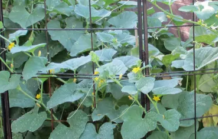Though it is too early to plant asparagus, it is not too early to make plans and prepare soil. This crop is a perennial and will survive for many years if given proper care. It prefers full sun and a well drained soil and is usually placed on the edge of the garden area so that there is no need to till around the area to plant other crops.
Proper soil prep is especially important for perennial crops. Take a soil test to insure proper levels of nutrients. See http://www.agronomy.kstate.edu/services/soiltesting/home-owner-samples/soil-analysis/sample-collection.html for the correct procedure. Take the soil sample into your local extension office (see http://www.ksre.ksu.edu/Map.aspx ) for analysis. Work the soil as early in the spring as possible but do not work wet soil as clods will form. Then add two inches of organic matter to the surface and the fertilizer and work again so the organic matter and fertilizer are blended into the soil.
Asparagus can be propagated from seed but is more often started from 1-year-old crowns. These crowns are planted deeply; about 8 inches deep either in a hole for each crown or in a trench. Space plants 18 to 24 inches apart. Fill in the trench gradually over the growing season to encourage growth. March 15 to April 15 is the best planting time. Adapted varieties include Jersey Giant, Jersey King, Jersey Knight, Jersey Supreme and Purple Passion. These are all male hybrids that will produce three times as much as our old Martha or Mary Washington varieties. Males have a number of advantages over females in that they live longer, emerge earlier in the spring, are more productive and eliminate potential volunteer plants that can reduce the productivity of a planting.
Weed control is very important. Competition with weeds results in slow establishment. A shallow hoeing should be all that is needed. (Ward Upham)




